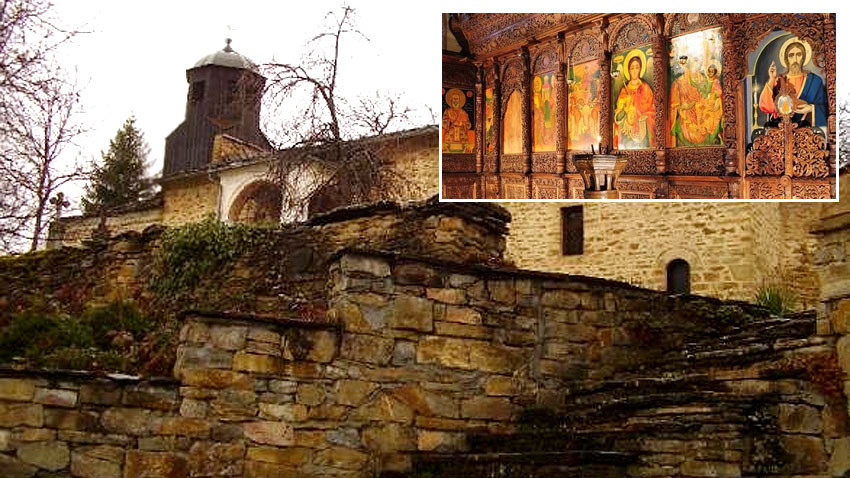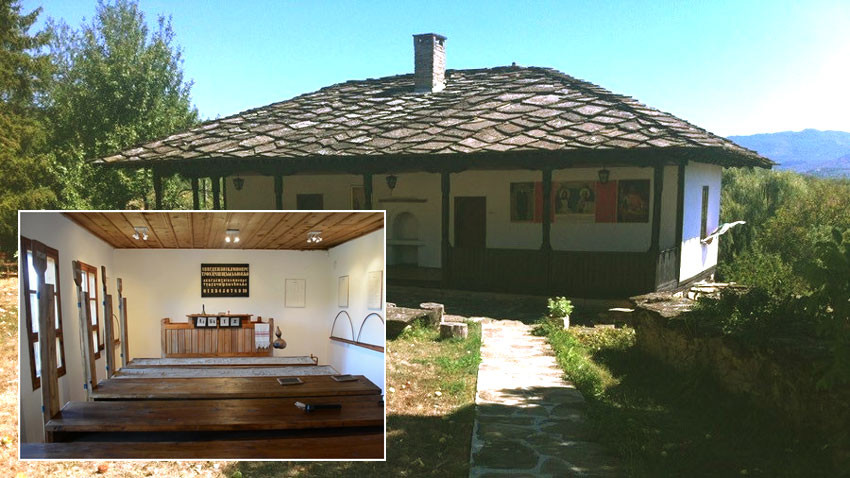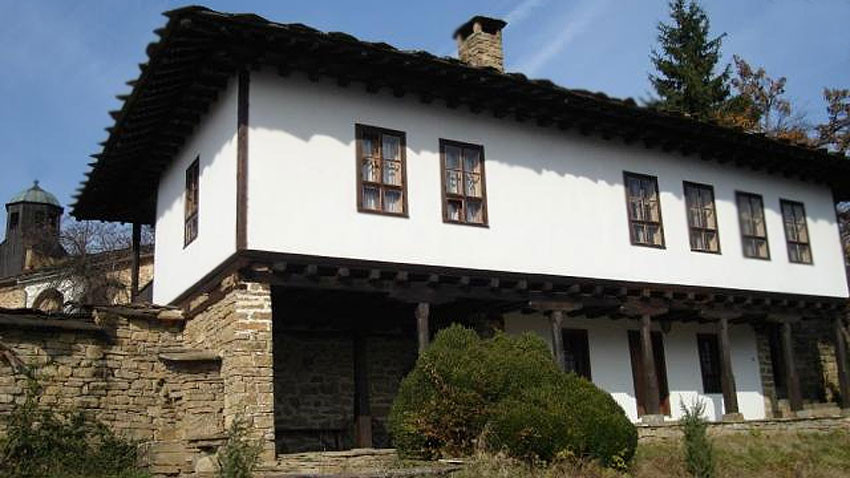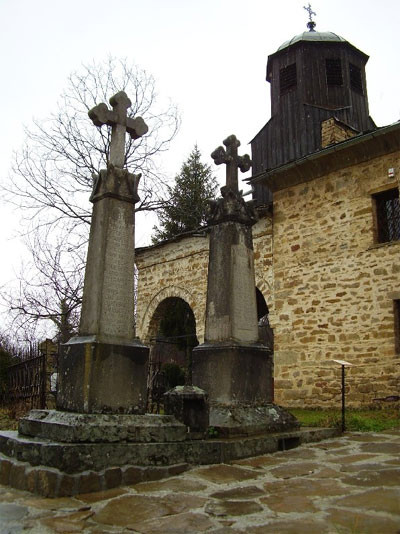Thank You Lord for letting us see the sunrise again and let us enjoy the sunset, too – such prayers and words of thankfulness used to give the start of each new day in the small village of Gumoshtnik (Lovech district) situated near the town of Troyan. This area is popular with its multiple historical and natural landmarks and some of them can be found in the village of Gumoshtnik. According to local people, the village church is a real masterpiece of orthodox icon painting. The walls of the massive church are 100-150 centimeters thick which proves that the forefathers of the local inhabitants were very bright and enterprising people. The Saint Nikolay Letni church was declared a monument of national significance.

In 1829 a monastic school was founded in the village. It preserved its authentic look and currently is among the most-visited historical landmarks in Gumoshtnik. According to historical data, the village had a population of nearly 4.300 people in the 15th century. Once, the village was an important administrative center with seven pubs and eight large manufactory shops.

In 1927 some bright mountain-dwellers decided to establish a community center in Gumoshtnik. They named it after Saint Paisius of Hilendar – the clergyman who first collected the glorious history of the Bulgarian people in a book. The local community center continues to develop its cultural and educational activity. The library collection amounts to over 9,000 titles. A gallery named after the local self-taught painter Tsanko Marinov was established in the village as well. His painting of Saint Paisius resembles one of the oldest icons of the Mother of God (Theotokos) in the local church – he used the same skills and methods to depict this bright figure of Bulgarian history. Marinov also painted portraits of local people and scenery of his native village. The gallery also displays his emblematic painting dedicated to the women of Troyan.

 The village of Gumoshtnik attracts many tourists with its historical landmarks and beautiful nature, but is often associated with the monument of eight local residents who died during the wreck of legendary Titanic in 1912. These people departed to the USA in the beginning of the 20th century, because they were very poor. They sold their lands, took bank loans and bought tickets for Titanic, leaving their women and even unborn children in Bulgaria, Angelina Georgieva who works as a secretary at the local community center told Radio Bulgaria and added:
The village of Gumoshtnik attracts many tourists with its historical landmarks and beautiful nature, but is often associated with the monument of eight local residents who died during the wreck of legendary Titanic in 1912. These people departed to the USA in the beginning of the 20th century, because they were very poor. They sold their lands, took bank loans and bought tickets for Titanic, leaving their women and even unborn children in Bulgaria, Angelina Georgieva who works as a secretary at the local community center told Radio Bulgaria and added:
The village was covered in posters reading Discover the New Paradise on Earth! These young men followed their dreams for a better life. An article named Love in Hollywood Style was preserved at the museum collection. It tells the personal story of a boy and a girl whose fathers departed to the USA and left their pregnant women in the village. They were born in the same year and lost their fathers who died on Titanic. However, destiny made them meet them later. When they grew up they married and made a family. Some local people worked and earned good money abroad long before the tragedy on Titanic. However, when the First Balkan War broke out in 1912 (which comprised actions of the Balkan League (Bulgaria, Serbia, Greece and Montenegro) against the Ottoman Empire), the emigrants from Gumoshtnik returned to Bulgaria to fight for their country. They were great patriots who would do anything for their country. Today, depopulation is the biggest problem of the village. We mainly rely on tourism. Gumoshtnik is the village with biggest number of villas in the whole region. Many families visit us during the summer and enjoy the hospitality of the true mountaineers.
English version: Kostadin Atanasov
Photos: private libraryIntense preparations are underway on the Southern Black Sea coast for the upcoming summer season. The first tourists are expected for Easter, and businesses are actively seeking thousands of workers, reports public service broadcaster BNT. The..
Last summer, Bulgaria's coastal city Burgas and the surrounding resort towns welcomed about 600,000 Bulgarian and foreign tourists , which is 21% more than in 2023. Recently, however, Burgas has also been developing as a cultural hub, attracting more and..
The Ministry of Tourism has launched a large-scale international advertising campaign on National Geographic and 24 Kitchen channels, part of The Walt Disney Company and Warner Bros. The TV advertisement promoting Bulgaria as a destination for..

+359 2 9336 661
